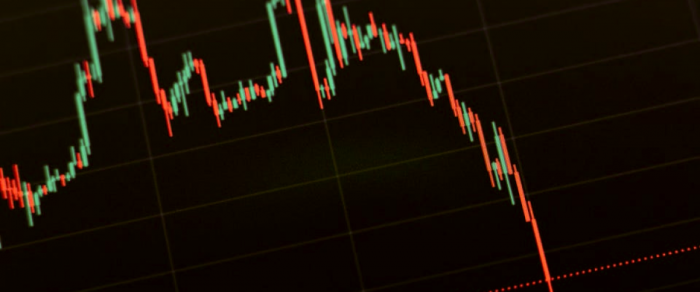Has the Crypto Market Finally Hit Bottom?
Cryptocurrencies have been around for more than a decade, but they only started to gain mainstream attention a few years ago. This was due in part to the meteoric rise of Bitcoin price as well as other digital tokens. At the peak, the total market value of all cryptocurrencies reached nearly $3 trillion in 2021. The future looked bright for investors and entrepreneurs alike, with thousands of projects launching into space.
However, it all came crashing down in late 2021 and early 2022. Month after month, prices have been falling drastically, wiping out billions of dollars in value and leaving many investors feeling burned. Some have even called it a “crypto winter” due to the cold chill that has descended on the market. In just one year, the price of Bitcoin, the most prominent digital asset, has decreased by over 70% from its all-time high of $69,044, which was reached on November 10, 2021 — to $16,853 as of November 18, 2022. This is a sure sign that the sector is suffering.
Of course, the price of the main cryptocurrency is an indicator of the general mood of the sector. According to CoinMarketCap, the capitalization of the whole crypto market declined by about $2 trillion within a year — roughly two-thirds of the peak value. These numbers are truly shocking.
But could things finally be turning around? Some experts are saying that the market may have finally found its floor and that we could be seeing a rebound in prices very soon. This would be great news for those who have been holding onto their investments in spite of the market downturn.
Why has the value of crypto been dropping recently?
First, let’s break down the causes of the 2022 bear market and how this all happened. So, why is Bitcoin down?
The prerequisites of the bear market were as early as 2021, when regulatory authorities around the world threatened to implement more stringent laws for digital currencies. For example, the Securities and Exchange Commission in the US launched a lawsuit against Ripple. China went on to ban Bitcoin mining, forcing many BTC miners to move to other countries. Not to mention India, the country with the second largest population, which banned crypto trading completely. All these events created an atmosphere of caution and doubt in the cryptocurrency market and its future.
Another major reason is the global crisis and rising inflation. Due to rapid global inflation and rising interest rates by the Federal Reserve and other central banks, fear and uncertainty grew among crypto investors. This was especially pronounced in the United States, but other regions like Europe were not spared either. The worries of a global recession began to rise, with investment in crypto falling significantly.
Also, various geopolitical events of 2022 shook the financial world and only exacerbated the situation.
It’s worth noting that the current crypto bear market is also believed to be partly caused by leverage. With leverage, investors can borrow funds from exchanges and use them to finance their investments in the market. But, as analysts say, if prices begin to drop, these leveraged positions quickly become liquidated, resulting in a domino effect of crashing prices that further erodes investor confidence and injects fear and uncertainty into the market.
Also, the absence of backing or other safety measures that are present in traditional stock markets didn’t make things better either, with Terra, Celsius, Three Arrows Capital, and Voyager among those to file for bankruptcy in a short span of months.
All these factors created a storm that made Bitcoin fall drastically and threatened to wipe out a big bulk of the market.
Why do some experts believe that the market has hit bottom and it’s time to buy in?
Despite all these negative developments, some suggest that the crypto bottom has already been reached and the market is poised for a rebound. Why, though?
One of the main methods used by financial strategists to predict large market trends is to analyze the market cycle. Market cycles are complex yet essential parts of the behavior of every market.
Generally, market cycles consist of four distinct phases:
Accumulation: During the accumulation phase, investors buy up stocks despite unfavorable conditions due to the anticipation of a future price increase.
Markup: In the markup phase, stock prices begin to increase as investors’ optimism grows and more buying activity takes place.
Distribution: During the distribution phase, large institutional investors, who were in for the long haul during accumulation, begin selling their shares in order to take profits from the price increase.
Mark-down: Finally, the mark-down phase occurs when selling exceeds buying and stock prices begin to drop. This is the bear market, and analysts can predict its endpoint based on data about previous phases.
It was estimated that for Bitcoin, the market cycle lasts four years or 1,275 days. Analysts from Grayscale Bitcoin Trust, the largest Bitcoin fund, examined not so long ago the periods of the market cycle for Bitcoin by taking into account Bitcoin’s realized price (a metric used to measure the performance of an asset over time) and its price patterns from 2012 and 2016 and came to optimistic conclusions about the end of the bear market.
According to their prediction, the bear market could finish at the end of 2022 or at the start of 2023, and there are still a few months of either downward or sideways price movement ahead. Also, historically, the time between market peaks and bottoms of Bitcoin appears to be shortening. In this case, it may indicate that the Bitcoin bottom is already there.
Of course, no one can surely say how it will play out in the end. And some recent events may suggest that it is too early to say that we are out of the woods.
Recent events and why it may be too early to speak of bottoming
A series of events have generated much uncertainty among investors regarding the cryptocurrency market. The crash of FTX, an important crypto exchange, has sent shockwaves through the industry as prices for all cryptos plummeted.
Some analysts refer to the exchange’s collapse as a “black swan event,” which is an unforeseen and unforeseeable event that has a major impact on the market or the world. The crash of FTX has further highlighted the risks associated with crypto and cast doubt on the reliability of the industry as a whole.
The uncertainty has caused many experts to reevaluate their views or remain cautiously on the sidelines. It is unclear when a recovery will occur, but the situation is likely to have far-reaching consequences for the entire market. Governments and regulatory authorities are already discussing even stricter regulations for the crypto sector, and many major exchanges and companies are being closely monitored.
Whether the worst has passed for the industry or if it still has a difficult road ahead, one thing is certain: crypto has been through tough times before, and it’s likely that it will see better days. Although the last few months have been difficult for many investors, the industry is resilient and has proven its ability to recover from past market cycles. Only time will tell what the future holds.
What can help investors survive a bear crypto market?
Amid all the uncertainty, it can be difficult for investors to figure out how best to protect their investments and try to turn a profit. Fortunately, there are strategies that investors can use in order to limit their losses or even make money during a bear market.
As a cryptocurrency investor, the best way to navigate through a bear market is to have a long-term view and stay focused on the fundamentals of projects. Capital preservation should be top of mind as bear markets can cause portfolios to suffer losses that sometimes may not recover.
The bear market is an important reminder of the importance of controlling one’s emotions during trading. It can be daunting to watch the prices of assets drop; however, it is essential to keep in mind that these conditions are only temporary and that prices will eventually bounce back. By managing your emotions effectively, you can ensure a more successful trading experience.
Despite the market crash and its effects on digital assets, there are still ways to earn passive income. Try different ways to maintain and increase your capital, like stacking, mining, or arbitrage.
Don’t forget to diversify your portfolio and try not to put all your eggs in one basket. Invest in popular coins and assets that have solid fundamentals and strong value propositions. Always invest only what you can afford to lose.
Conclusion
In conclusion, the current crypto bear market has been a difficult period for many investors. However, it is important to remember that all markets are cyclical and that prices will eventually rebound. By staying informed of new developments in the industry, exercising discipline during trading, and taking advantage of various passive income strategies, investors can weather the storm and come out on top when the market recovers.



